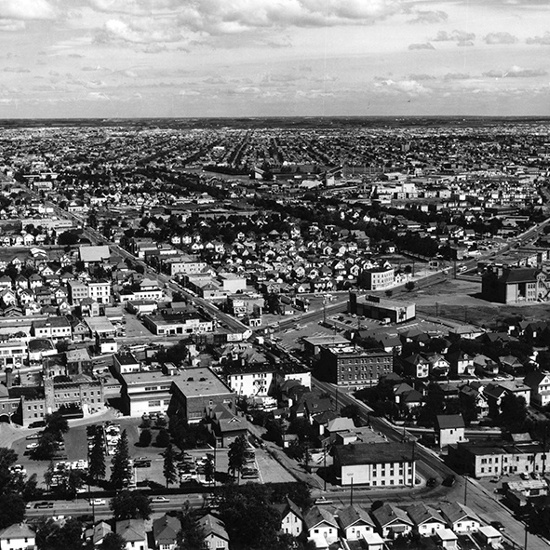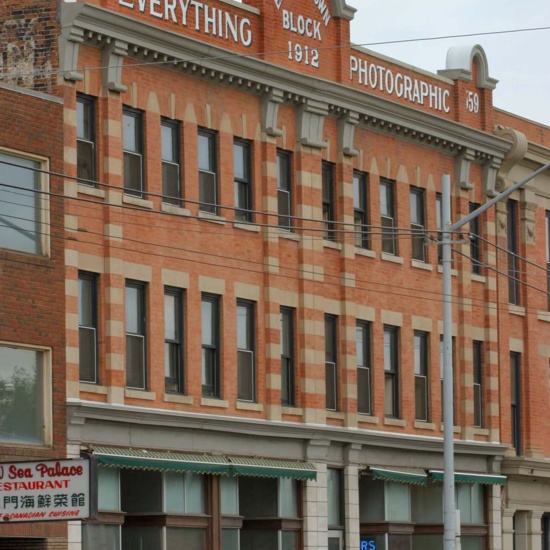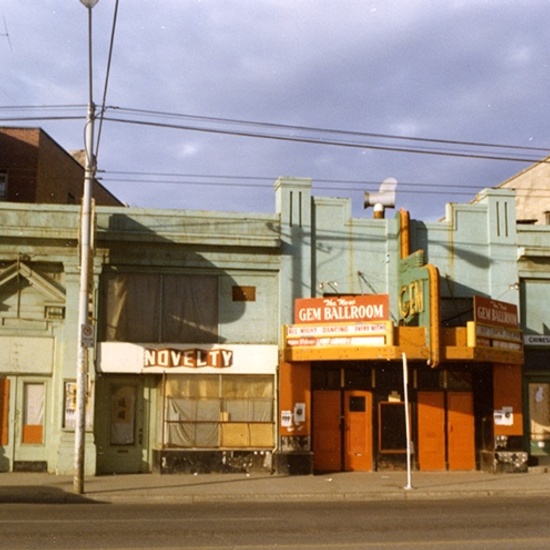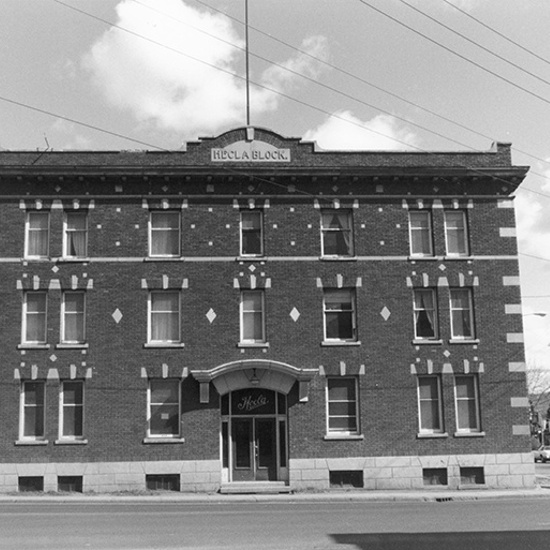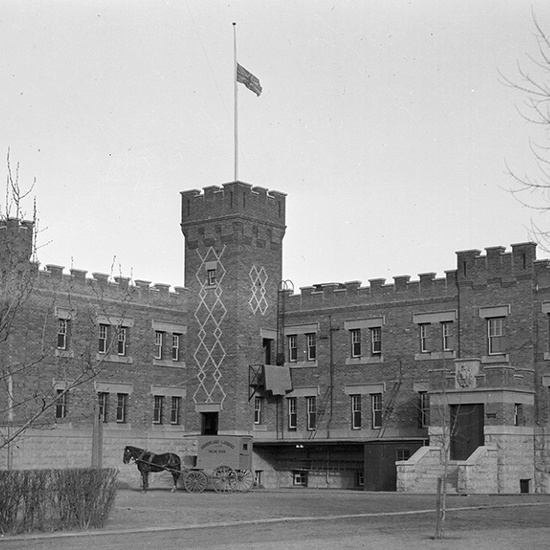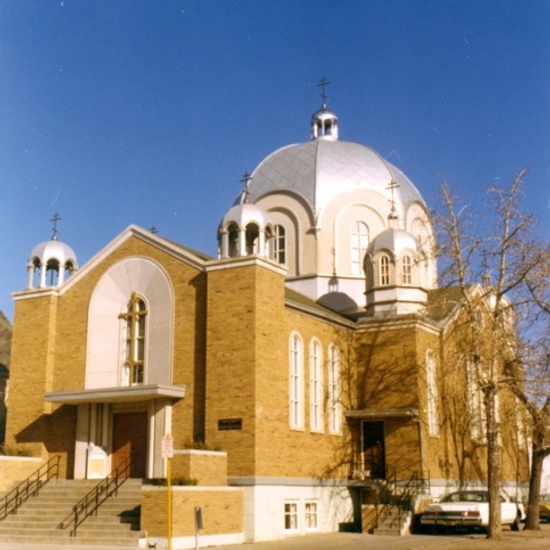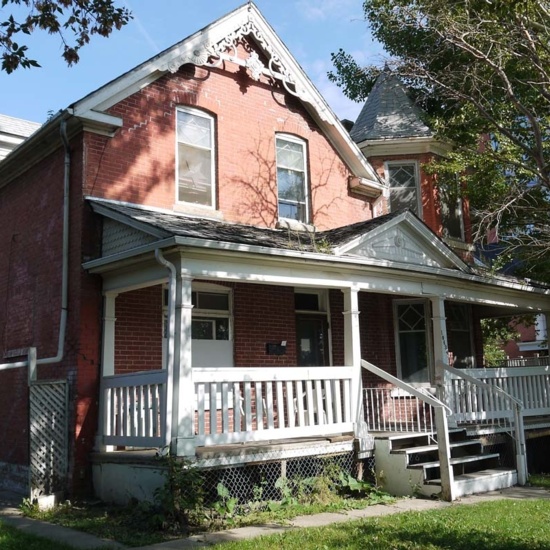Boyle Street
The Boyle Street area is as old as Edmonton, born from enterprising newcomers.
The Boyle Street area is as old as Edmonton, born from enterprising newcomers.
Boyle Street is one of the oldest neighbourhoods of Edmonton. The community spans from the North Saskatchewan River to the LRT tracks, and 84 Street to 97 Street. It is named after Boyle Street (103 A Avenue) which in turn was named after John R. Boyle, a local lawyer who sat on Edmonton’s first municipal council and later became an Alberta MLA. Its out-of-square shape can be attributed to Fort Edmonton days: the first settlers outside the Fort walls lived on traditional Métis river lots, long narrow tracts of land perpendicular to the river. In 1882 Dominion Land Surveyors circumscribed a 3,000 acre Hudson Bay Company (HBC) Reserve north of the North Saskatchewan River around the fort and formalized many of these river lot properties laying outside the reserve boundary. The town of Edmonton came into being on the eastern edge of the HBC reserve.
The city’s commercial centre began at Namayo Avenue (97 Street) and Jasper Avenue. The area that has become Boyle Street was as a result a vibrant residential and industry hub. It included an extensive garment district, the city’s first public hospital, and the city’s first daycare. The red brick Alexander Taylor Public School built in 1907 and the Great Western Garment (GWG) Company Building at 10305-97 Street harken back to this era. This was where newcomers arrived in town, settled, and plied their future. Notably, Boyle Street became an area where people created community. Ukrainian newcomers, some of whom faced significant discrimination elsewhere, supported each other in the area through the establishment of St. Josaphat Church on Namayo Avenue, the Ukrainian Bookstore on Kinistino Avenue (96 Street), and many businesses. Historian Francis Swyripa notes that “this first wave had little capital and few material resources and lacked the aid of compatriots, the support of familiar institutions” so a local community was essential to their very survival and eventual success. In 1931, there were 5,025 Ukrainians in Edmonton, many of whom lived on Namayo, Kinistino, and Syndicate (95 Street) Avenues. Other local communities thrived in Boyle Street as well. Prior to 1900 there were very few in Edmonton of German heritage, those who were here settled around Kinistino and Namayo and set up businesses as grocers, butchers, carpenters or real estate agents. By 1905 the area included the Edelweiss Club, a German choir, a German bookstore, three German churches, and the offices of the Alberta Herold, the first German newspaper in Alberta. Chinese citizens unfortunately faced more overt discrimination than most. The Canadian government passed the so-called Chinese Exclusion act in 1923 stringently limiting Chinese immigration, and Chinese Canadians only received a half-portion of relief payments during the Great Depression. The emergence of Edmonton’s small Chinese quarter at the corner of Namayo and Rice Street (101 A Avenue) after 1911 with laundries, cafes, restaurants and other businesses was therefore essential to a small but growing local Chinese population. The community also contained a gateway to the original Chinese centre of the city, now an older sibling to a new Chinatown further north on 97 Street.
The HBC sold off the remainder of their reserve lands in 1912 and Edmonton’s commercial and residential focus moved west along Jasper Avenue. The Boyle Street area remained a mixed-use area: primarily residential with trades and small industry especially along the railway right-of-way. Following the Second World War, many people who had started out in Boyle Street could afford to move and became dispersed throughout the city. Those who couldn’t afford it stayed. The neighbourhood became home to an increasing number of vacant lots and fewer residences. By the end of the 1950s Boyle Street had transitioned into a place of economy hotels, privately run rooming houses, and vacant properties. It was also perceived as a location for petty crimes.
The community has since been the focus of many plans for urban renewal, social assistance, and public housing projects including one grandiose scheme in the 1980s involving a $200 million hotel, office, and apartment complex. The change that has actually occurred, however, has happened slowly. As redevelopment intensified elsewhere, some parts of Boyle Street have retained complete and unaltered streetscapes of early Edmonton. Two areas stand out: Jasper Avenue east of 97 Street featuring the Goodridge Block (1912), Jasper House Hotel (1882), Ernest Brown Block (1912-1913), Pendennis Hotel (1912), and Gibson Block (1913); and the south side of 103 Avenue, west of 95 Street where five homes built between 1908 and 1914 still stand.
Details
Sub Division Date
TBA
Structures
Ernest Brown Block
Gem Theatre
Gibson Block
Hecla Block
Northwest Mounted Police Barracks
St. Barbara's Russian Orthodox Cathedral
West Residence
Architects
William G. Blakey
David Hardie
James Henderson
Arthur W. Cowley
Nicolas Flak
Roland Lines
Herbert Alton Magoon
Unknown
Architectural Styles
Byzantine
Chicago
Classical Revival
Collegiate Gothic
Edwardian
Flatiron
Gothic Revival
Moderne
Queen Anne
